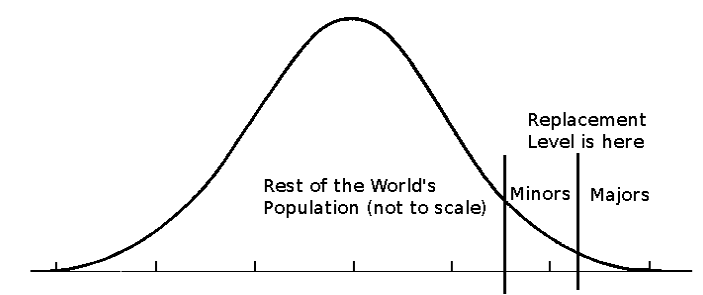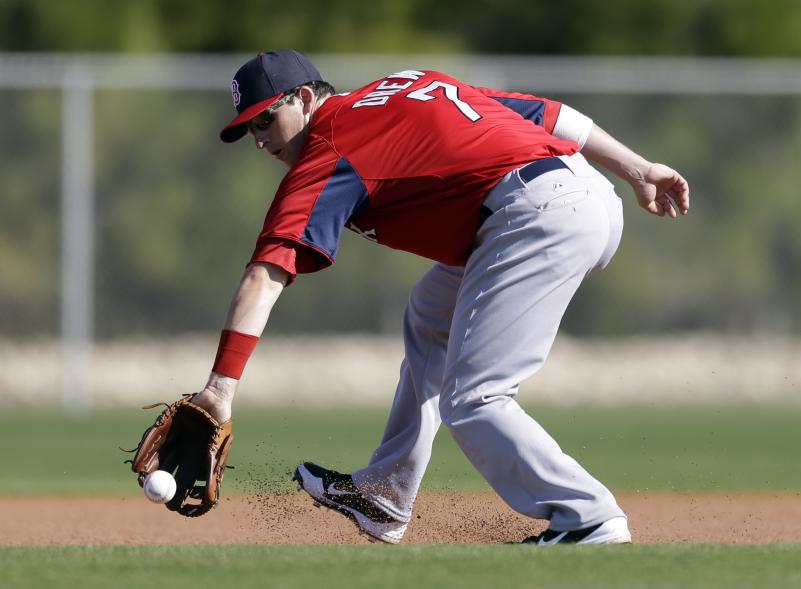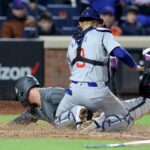By now, every Mets fan in America must be tired of seeing stories about Stephen Drew and Ruben Tejada, and Ike Davis and the first base situation.
I hate to say it, but they aren’t going to go away until the Mets either make a move, or spring training starts.
The latest in the Mets’ shortstop saga seems to be a post that was put up on Fangraphs earlier today entitled The Problem With Stephen Drew’s Market, by Jeff Sullivan. Sullivan does a nice job trying to explain that the reason why Drew is still available is because he doesn’t provide a good enough upgrade over what teams already have in place.
It makes sense. A major issue with Drew is that the teams that could use him, can’t afford him and the ones that can afford him, don’t need him.
Why spend the money on a player if there is no upgrade? I’m sure people are thinking the Mets are mulling that over right now as we speak.
But they aren’t.
The Mets have made up their mind that they want Drew and it’s just a matter of waiting him out to get a team-friendly deal. If the Mets didn’t want Drew, we wouldn’t be hearing about their discussions with Drew’s agent, Scott Boras, on almost a daily basis. The Mets know what Sullivan correctly pointed out in his article—that the Mets are really the only team out there where Drew represents a good enough upgrade to justify spending the extra money.
I actually stumbled across this quote from the Sullivan article (shown below) over on Metsblog. I was then prompted to click the link and read the entire article on Fangraphs to find out what the rest of the article was all about.
Because right now a claim can’t be made that a team needs Stephen Drew. He’d help the Red Sox a little, but he’d make a very small impact on their overall chances, so there’s no need to pay much for his services. Drew would help the Mets by maybe a win or two, but that might just help them lock up third place in the NL East, trailing the Washington Nationals and Atlanta Braves in some order. That improvement isn’t valueless, but the Mets needn’t pay market price, since this isn’t supposed to be a championship season. And the difference between Drew and Tejada would presumably be smaller in 2015, when Harvey is expected to return.
I have already stated my thoughts on why the Mets should go after Drew (you can read them here), but I had a major issue with regard to the quote above. The main concern I have is how much weight has been given to WAR when analyzing which players should be signed.
It’s a known fact that many analysts are trying to avoid using yearly WAR when analyzing players due to the volatility in the defensive metric. Drew’s projected WAR for 2014 is 2.0 according to Steamer projections, which is where I assume Sullivan comes up with the idea that Drew would only help out the Mets with a win or two in 2014.
But if that’s truly the case, why go after any shortstops for that matter?
Looking at the breakdown of projected Steamer WAR for shortstops next year shows that only two shortstops have a projected WAR over 4.0—Troy Tulowitzki and Hanley Ramirez. If looking at WAR alone, I would question why the Mets should go after any of these guys, and should surely keep Tejada instead. There would be no logical reason why the Mets should spend more money on any shortstops, even some of the top shortstops in the game, if they are only going to give about three to four additional wins.
For those that need a quick sabermetric lesson, WAR is a stat that determines how many more wins a player will give you over a replacement player, which is not characterized as an average player. A replacement player, according to Baseball Reference, “are players easy to obtain when a starter goes down. These are the players who receive non-roster invites at the start of the year or the players who are 6-year minor league free agents. Baseball talent among the population is generally distributed normally, but only the very right-end of that curve plays professional baseball.”
I’m not a big fan of using WAR. I’m not saying it doesn’t have it’s place, but I prefer Weighted Runs Created (wRC+). This stat tries to quantify a player’s total offensive value measured in runs—defense is not taken into account (as stated earlier, defense can alter WAR when looked at yearly). We don’t need a stat that incorporates defense when comparing Drew and Tejada because we already know what we’re going to get from them.
Drew’s wRC+ is practically even across Oliver and Steamer projections at about 92. Tejada’s wRC+ is all over the place, on two opposite ends of the spectrum with regard to Oliver and Steamer projections—Steamer 87, Oliver 68.
The projections from Oliver take into account the past three seasons, so when you see Drew’s wRC+ as a steady number, it backs up what I said the other day when I said the Mets will at least know what they are going to get from Drew. Tejada is a complete wild card, and the discrepancy in his wRC+ projections paints a great picture of how much of a wild card he is.
The Mets can roll the dice and hope they get the Steamer version of Tejada in 2014, or they can pay for who many view as the better ball player in Drew.
We aren’t talking about tools. We aren’t talking about potential. We are talking about who the Mets should have out there right now that is going to help solidify that infield and help the Mets win more games.
Let’s not forget, some things aren’t measured by stats—like the improved confidence of your starting pitcher knowing that there is a solid defense behind them. I’m not so sure that Tejada’s teammates would be as confident in him as they would be in Drew.
Who knows, maybe playing behind Drew for a year or two will help Tejada mature into the Mets shortstop of the future. Maybe that’s exactly what Tejada needs.
















